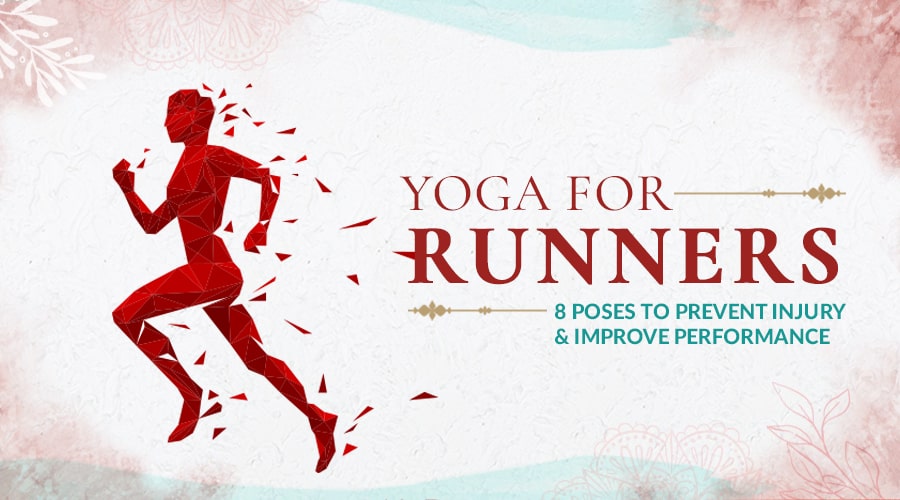As a runner, you know the importance of staying physically and mentally strong to tackle those long miles like a pro. But running can also put a lot of strain on your body, leaving you tight, sore, and prone to injury. Sometimes, a good stretch is all you need to keep the aches and pains at bay, but in most cases, you need something more.
Today, top athletes and amateur runners alike are turning to an unlikely place to curb the adverse effects of running: the yoga mat. Yoga for runners has the power to boost your recovery, improve performance, and reduce the risk of injury on and off the road. With its focus on flexibility, strength, and mindfulness, yoga complements any running routine perfectly, helping you achieve balance and your best run.
So, whether you're a seasoned marathoner or just starting out on your running journey, this blog will explore the incredible benefits of yoga for runners and the best post-run yoga poses to build strength and boost your recovery.
What is the Best Yoga Style for Runners?
The best type of yoga for runners is typically Hatha Yoga, Yin Yoga, and Vinyasa. These styles focus on stretching and/or strengthening the muscles used when running (and those not) while promoting flexibility and mental focus. However, there is a plethora of yoga styles that can enhance your running performance and provide relief from pain and injuries typically caused by long journeys on the road.
Below is a brief description of the three types of yoga for runners for no pain and all the gain in your practice.
1. Hatha Yoga
This style of yoga boasts many physical benefits and is a good starting point for beginners. In a Hatha Yoga class, you'll hold various standing, supine, prone, and seated poses to improve flexibility and build strength.
2. Vinyasa Yoga
Vinyasa is a more dynamic style of yoga that involves flowing from one pose to another, often in sync with your breath. Many runners practice Vinyasa to improve endurance and cardiovascular fitness. It’s also a great way to get the blood flowing and warm up sleepy muscles before a run.
3. Yin Yoga
Yin Yoga is a passive practice that focuses on holding poses for more extended periods of time (usually several minutes). If you are prone to injuries, struggle with stiffness, or lack of mobility, regular practice of Yin can help you improve your flexibility and release muscle tension.
In this blog, we’ll focus on a gentle and dynamic post-run yoga routine that relieves tightness and tension in the muscles typically used in running. These runners' yoga poses will also promote strength and relaxation for a balanced body and mind.
8 Post-Run Yoga Poses for Strength & Recovery
1. Extended Triangle Pose
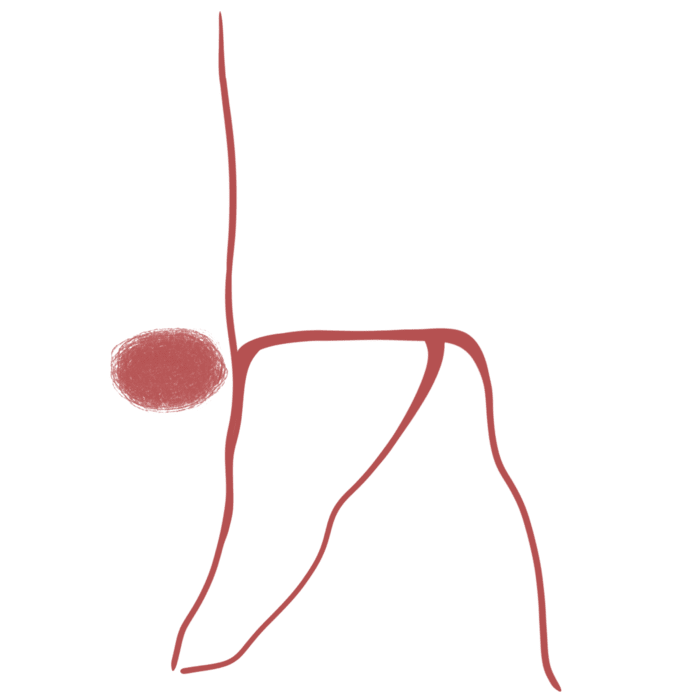
The Extended Triangle Pose is the perfect runner's yoga pose to open tight hips and strengthen the quadriceps, hamstrings, and calves. In addition, the pose can help lengthen and align the spine. This is especially helpful for runners who experience lower back pain from a poor running posture.
- Begin standing at the top of your mat with your feet hip-distance apart.
- Turn your right foot out to the right side so that it is parallel with the edge of your mat. Keep your left foot pointing forward.
- Raise your arms out to your sides, palms facing down.
- On an exhale, extend your torso out to the right side, reaching your right arm down toward your right ankle or shin. Your left arm should be reaching up toward the ceiling.
- Hold the pose for several deep breaths and keep your legs engaged and your core strong.
- On inhaling, lift yourself back up to a standing position and turn your right foot back to face forward. Then, repeat on the other side.
2. Downward-Facing Dog
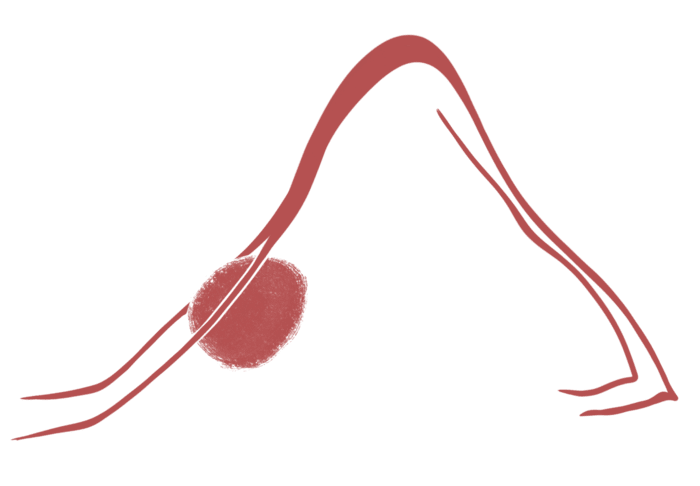
Downward-Facing Dog Pose is a must in every post-run yoga practice. This rejuvenating inversion stretches and strengthens the hamstrings, calves, foot arches, and the Achilles tendons, which are all crucial for running. It also lengthens the spine and strengthens the shoulders, helping you achieve the perfect running posture.
- Begin on all fours with your hands shoulder-width apart and your knees hip-width apart.
- Tuck your toes under and lift your hips up towards the ceiling, straightening your arms and legs.
- Press your palms firmly into the ground and lengthen through your spine, reaching your tailbone up towards the ceiling.
- Let your head and neck hang freely, and gaze towards your belly button or between your feet.
- Press your heels into the ground or keep them lifted if you feel tightness in your hamstrings.
- Hold the pose for several deep breaths, feeling a stretch in your hamstrings, calves, and spine.
3. Crescent Lunge Pose

Crescent Lunge Pose is a powerful runners' yoga pose that can improve flexibility, strength, and overall performance. This yoga runners lunge targets the hip flexors, quadriceps, hamstrings, and calves, which often become stiff in intensive lower-body workouts like running. It also opens the chest, shoulders, and torso.
- Start standing at the top of your mat with your feet hip-distance apart and your arms by your sides.
- Step your right foot back about 3-4 feet and turn your toes slightly out to a 45-degree angle.
- Bend your left knee, ensuring it stays directly over your ankle and doesn’t extend beyond your toes.
- As you inhale, lift your arms overhead, bringing your palms together.
- Exhale and gently sink deeper into the pose, allowing your hips to sink toward the ground.
- Keep your back leg straight, pressing your heel down into the floor.
- Keep your chest lifted and your gaze forward, lengthening through your spine.
- Hold the pose for a few deep breaths, then release and repeat on the other side.
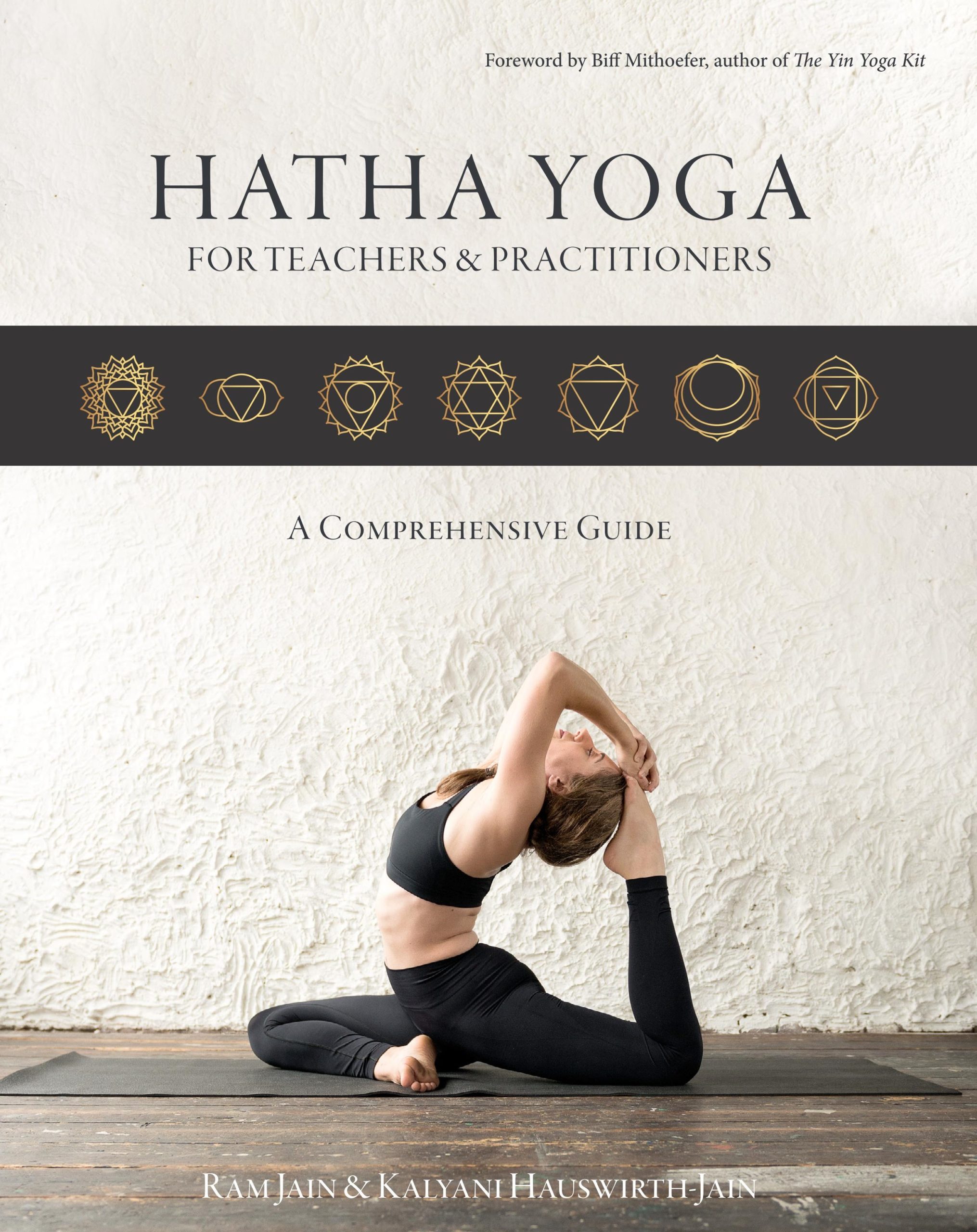
Get a free copy of our Amazon bestselling book directly into your inbox!
Learn how to practice, modify and sequence 250+ yoga postures according to ancient Hatha Yoga principles.
4. Pigeon Pose
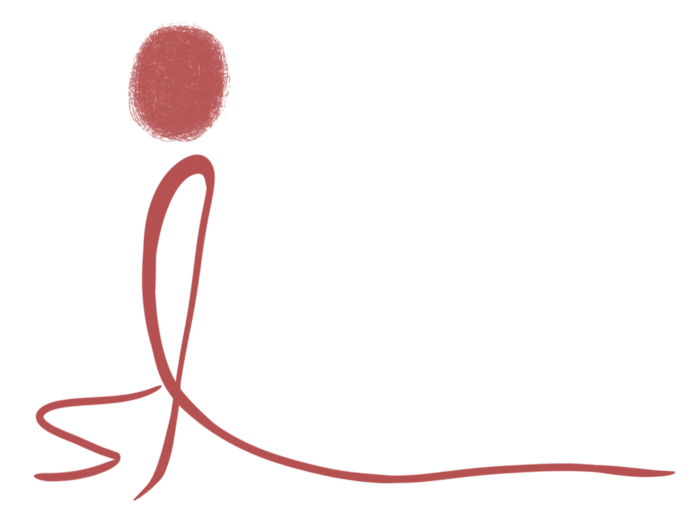
Your glutes stabilize your knees while running, and your hips and pelvis are responsible for your range of motion. Pigeon Pose is one of the best post-run yoga poses, as it targets these key areas while alleviating pain and stress in the glutes and lower back.
- Start on all fours, with wrists directly under your shoulders and knees under your hips.
- Bring your right knee forward towards your right hand and lower your leg down to the floor so that your shin is parallel to the top edge of the mat.
- Slide your left leg back behind you, keeping your hips square to the front of the mat.
- Exhale and fold forward over your right leg, resting your forearms or forehead on the mat.
- Breathe deeply and hold for 5-10 breaths, allowing your hips to release and sink towards the floor.
- To release, inhale and press your hands into the mat to lift your torso upright.
- Bring your right leg back and return to all fours.
- Repeat the pose on the opposite side by bringing your left knee forward and sliding your right leg back.
If you have sensitive knees, you can modify this pose by placing a cushion or block underneath the front buttock. This reduces the risk of over-rotation and straining the knee.
5. Extended Cobra Pose

Extended Cobra Pose is a deep backbend that strengthens the muscles in the back, shoulders, and arms while also opening the chest and improving overall posture. For runners, this yoga pose is essential as it counteracts the forward-leaning posture from spending long periods on the road.
- Start by lying flat on your stomach on your yoga mat with your palms pressed down on the mat, directly under your shoulders.
- Keep your legs close together and point your toes out behind you.
- As you inhale, press into your hands and slowly lift your chest off the mat. Keep your elbows next to your sides and relax your shoulders.
- Keep pressing into your hands and straightening your arms to lift your chest higher. You should feel a stretch in your lower back and abdomen.
- You can lift your chin and look up towards the ceiling if it feels comfortable.
- Hold the pose for a few breaths, then slowly release by lowering your chest back down to the mat as you exhale.
6. Half Bridge Pose

Half Bridge Pose strengthens your glutes and hamstrings, both necessary if you want to improve your running time and performance in sprints. This stretch extends to the chest and shoulders, toning the legs and buttocks in the process. Plus, if you suffer from lower-back pain, Half Bridge Pose will help rejuvenate and relax overworked muscles in the area.
- Lie down on your back, bend your knees, and bring your feet close to your hips. Ensure your feet are hip-width apart and heels are on the floor.
- Place your hands by your sides, palms facing downward.
- Breathe in, push your hands into the floor, and slowly lift your hips up to the ceiling.
- Reach with your hands toward your ankles and bring your chest toward your chin.
- Keep lifting your pelvis upward and breathe evenly.
7. Half-Lord-of-the-Fishes Pose
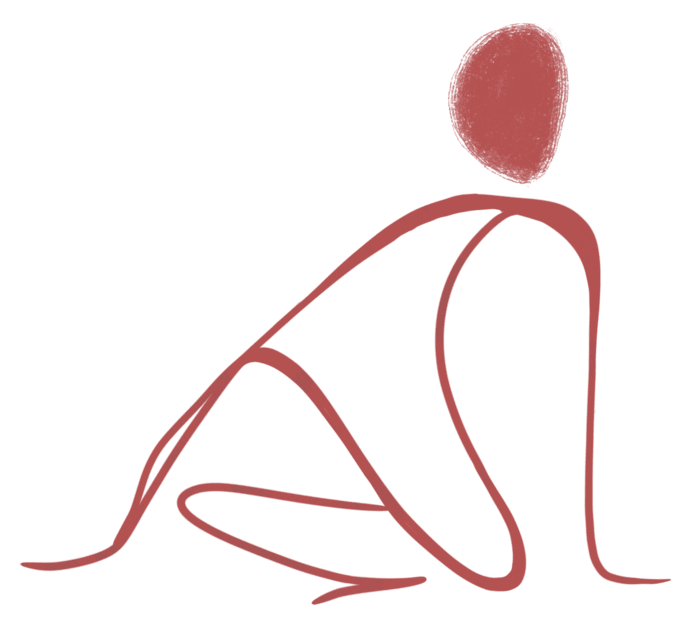
Half-Lord-of-the-Fishes Pose is the go-to runners' yoga pose for stiffness in hip joints, arms, shoulders, upper back, and neck. The twisting motion can also help lengthen and stretch the IT band and the muscles surrounding it for a rejuvenating IT band and back stretch.
- Begin by sitting on the floor with your legs stretched out in front of you. Bend your right knee and bring your right foot over your left thigh.
- Place your left hand on the floor behind your back for support. Inhale and lift your right arm up, lengthening your spine.
- As you exhale, twist your torso to the right, placing your right elbow on the outside of your right knee. You can either wrap your right hand around your back to hold your left hand or hold onto your right knee with your left hand.
- Keep your left leg straight and active, pressing your left foot into the floor to ground your pose.
- Stay in this pose for a few deep breaths, lengthening your spine with each inhale and twisting a little deeper with each exhale.
- To release, inhale and return to the center, then repeat on the other side.
Incorrect twisting of the spine can cause injuries and back pain. When coming into this pose, it’s important to twist in a safe position with your sitting bones on the ground, hips aligned and spine long.
8. Child's Pose

Child's Pose is a gentle resting pose that provides a powerful stretch in your hips, knees, thighs, lower back, and ankles. This pose is excellent for runners that suffer from shin splints as it keeps the ankles flexible and loose while giving the tops of the shins and feet a soothing stretch.
- Start kneeling on the floor with your knees hip-width apart and your toes touching.
- Shift your weight onto your heels and fold forward, dropping your torso between your thighs.
- Allow your forehead to rest on the floor and extend your arms out in front of you. You can rest your hands on the floor or bring them back alongside your body with your palms facing up.
- Relax your shoulders and breathe deeply. Stay here for 1-2 minutes, or as long as it is comfortable for you.
- When you're ready to come out of the pose, gently lift your forehead off the floor and use your hands to press yourself back up to a kneeling position.
What are the Benefits of Yoga for Runners?
Like running, yoga is a fantastic form of fitness. It works core muscle groups in the body and incorporates deeply restorative practices like meditation, pranayama, and asana to create one super practice. But it can be even more powerful when paired with a consistent running routine. If you're considering incorporating yoga into your post-run stretching routine, here are some benefits you can expect.
1. Improves Flexibility
Although flexibility might not seem important in running, being able to move freely and with ease is an unspoken requirement on the road. Yoga is well-known for its focus on flexibility. Runners' yoga poses like Pigeon and Crescent Lunge can help reduce muscle tension and tightness caused by running and improve the range of motion in the hips, groin, and legs.
2. Prevents Injury
As a runner, injuries like IT band syndrome, runner's knee, and shin splints are all too common. Strength yoga for runners works on muscles and tendons that may be weak or under-used, such as the hips, glutes, and core. This can help to improve overall stability and alignment, reducing the risk of these injuries.
If you suffer from chronic lower back injuries or sciatica nerve pain, yoga can improve spine health, relieve nerve pain, and accelerate the healing process.
3. Increases Strength
Yoga is a great way to build strength, particularly in areas that are neglected during running. For example, yoga poses such as Downward Dog and Plank Pose can help strengthen the core and arms, while poses like Warrior and Chair Pose can build leg and glute strength. Working these essential muscles will give you more power and a better result.
4. Boosts Mental Stamina
Many runners hit the road to clear their minds and reduce stress after a long day. But yoga can take this to the next level. Mindfulness practices like breathwork and meditation alleviate stress and anxiety, helping you focus and refine your performance. With your mind calm and focused, you'll be able to run further and faster.
5. Enhances Endurance
Studies show that regular yoga practice decreased high blood pressure and heart rate levels, improving cardiovascular efficiency and physical endurance. These effects can help the heart pump more efficiently during your runs, enhancing physical stamina and allowing you to run longer distances with more ease.
Pranayama breathing exercises also give you better control over your breath in physically and mentally stressful situations. This can be hugely beneficial when your fight-or-flight mode kicks in and you need to bring your heart rate and blood pressure down to a safe level.
Should You Do Yoga Before or After Running?
Now comes the question, should you do yoga before running or after? Unfortunately, there is no one-size-fits-all answer to this question. Like all practices, it depends on the person and type of yoga practice.
Generally speaking, yoga is the most beneficial after a run or on rest days. However, stepping onto the mat before a brisk run can also benefit your health. Let's see how each stacks up against the other.
Yoga Before Running
Many experts advise against yoga before running, as static stretching and intensive yoga practice can weaken your muscles and lower your performance.
That said, gentle and dynamic yoga practices like Vinyasa or Sun Salutations can be a great way to wake and warm-up the body before a vigorous run. So, if you'd like to roll out the mat before a run, keep your session light, short and active.
Yoga After Running
For many athletes, yoga after running is the way to go. Gentle practices like Yin Yoga act as a bridge into rest mode, increasing blood flow and boosting recovery. After a run, muscles contract which can cause stiffness and soreness the next day. Practicing yoga after running releases this tension and improves flexibility, preventing strain and even injury.
How Do You Combine Yoga and Running? 5 Tips for a Successful Cross-Training Program
It's clear that incorporating yoga into your running routine is a great idea, but how do you balance both? Here are a few tips to help you get started:
Start Slowly
If you're new to either yoga or running, it's important to start slowly and gradually build up your practice. You don't want to overdo it and risk injury or burnout in the first week. Instead, gradually progress in each activity, and if you begin to feel fatigued, consider alternating yoga and running on different days to give your muscles and joints enough time to recover.
Focus on Flexibility
Yoga can help improve your flexibility, which can in turn improve your running form and prevent injury. In your sessions, be sure to focus on runners' yoga poses and practices that stretch the muscles and tissues used in running, such as your hamstrings, quadriceps, and calves, as well as those you don't.
Incorporate Strength Training
Yoga for runners is especially useful for building strength and balance, which goes hand-in-hand with great running. Try out practices like Ashtanga, Hatha, and even Power Yoga to work core muscle groups and build strength in your upper and lower body.
Practice Mindfulness
Both yoga and running are great ways to relieve stress and improve mental clarity. Make time for pranayama and meditation, even if it's just two minutes of Shavasana, for a balanced body and mind.
Listen to Your Body
Lastly, keep your ear close to your body. As with any new physical activity, you'll experience discomfort and need to adjust your practice accordingly. If a pose feels uncomfortable or painful, back off and modify the pose to make it more accessible.
Final Thought
Yoga for runners is a simple and rejuvenating way to reduce the adverse effects running has on your body and prevent injury. It can also provide a more well-rounded training regime, helping you build strength and flexibility while reaching your running goals. If you plan on incorporating yoga into your fitness routine, remember to balance it with your other training and be consistent to experience its full benefit.

Get a free copy of our Amazon bestselling book directly into your inbox!
Learn how to practice, modify and sequence 250+ yoga postures according to ancient Hatha Yoga principles.

